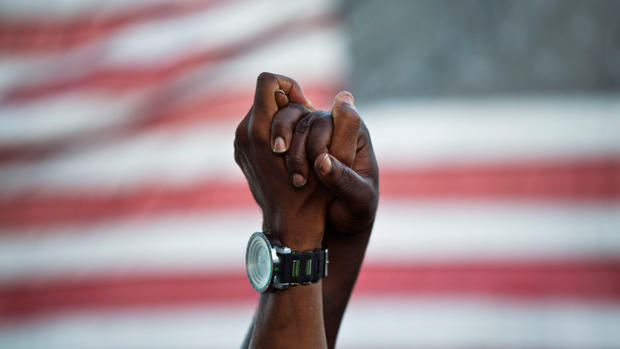
On June 17, 2015, a white supremacist walked into the Emanuel African Methodist Episcopal (AME) Church in Charleston, South Carolina, and murdered nine black men and women: Sharonda Coleman-Singleton, Cynthia Hurd, Susie Jackson, Ethel Lance, Depayne Middleton-Doctor, Clementa Pinckney, Tywanza Sanders, Daniel Simmons, and Myra Thompson. The church was the site of Denmark Vesey’s planned revolt against slavery almost two hundred years before and played a pivotal role in Charleston’s black community. Parishioners at the Emanuel AME Church had welcomed a stranger into their bible study, extending to him kindness and hospitality—completely unaware of his sinister motives.
Like so many others, news of the Charleston massacre left me feeling overcome with disappointment, grief, and rage. It was not the first act of racist violence in the United States. Indeed, black people in this country have been subjected to this kind of violence and terror for centuries.
But, the Charleston massacre was especially difficult to face because, among other things, it served as a bitter reminder that on matters of race relations we have a very long way to go. Many of us would like to believe that the Charleston shooting was an isolated event or aberration—something disconnected from any aspect of American life and culture.
History tells us a very different story. One cannot think of the 2015 Charleston massacre without reflecting on the many other acts of white supremacist violence in U.S. history—often targeting black churches.
This is not coincidental. In addition to addressing the emotional and spiritual needs of the communities in which they reside, black places of worship have provided sanctuaries for education and political organizing and mobilizing. Because of the significant role black religious institutions have played in sustaining black political action, these churches have always been subjected to white supremacist terror, even as these white terrorists often identified as Christian.
In 1822, in an eerily similar set of circumstances, a group of white men burned down the predecessor of the Emanuel AME Church, located only a few blocks away from the current-day location in Charleston. The act of violence represented a pattern that extended far beyond the city of Charleston. During the early nineteenth century, white vigilantes attacked a string of black churches in Northern cities—including in Providence, Rhode Island in 1824 and in Cincinnati, Ohio in 1829.
During the 1960s, at the height of the modern Civil Rights Movement, black churches were still frequently targeted by white supremacists. The 1963 Birmingham Street bombing, for example, underscores the pervasive nature of racism and the long history of racial violence in the United States. During a church service on Sunday, September 15, 1963, a group of Ku Klux Klan (KKK) members planted a bomb at the 16th Street Baptist Church in Birmingham, Alabama, killing four black girls—Denise McNair, Addie Mae Collins, Carole Robertson, and Cynthia Wesley—and injuring twenty-three others. The 16th Street Baptist Church had been a central meeting place for Rev. Martin Luther King, Jr. and other civil rights leaders who were attempting to register local black residents to vote.
In his eulogy for the young girls, delivered on September 18, 1963, King described them as “martyred heroines of a holy crusade for freedom and human dignity.” “Their death,” he explained, “says to us that we must work passionately and unrelentingly for the realization of the American dream.”
The same can be said of Sharonda Coleman-Singleton, Cynthia Hurd, Susie Jackson, Ethel Lance, Depayne Middleton-Doctor, Clementa Pinckney, Tywanza Sanders, Daniel Simmons, and Myra Thompson—the nine men and women who lost their lives in the Charleston massacre a year ago. Their lives can never be replaced. But, we owe it to them to confront the unsettling history of racism and racial violence in the United States.
While it’s so easy to forget—and perhaps some find comfort in avoiding its painful reality—the Charleston massacre compels us to remember. We must remember the past in order to understand the present. Above all, we must remember to ensure that it never happens again.



Expositores: Oscar Vidarte (PUCP) Fernando González Vigil (Universidad del Pacífico) Inscripciones aquí. Leer más
Una retrospectiva para entender los próximos cuatro años. Leer más
En la conferencia se hará una presentación de los temas más relevantes del proceso de negociación se llevó a cabo desde el 2012, así como del acuerdo de paz firmado entre el Gobierno colombiano y la guerrilla de las FARC a finales del 2016. Se analizarán los desafíos y las... Leer más
El Observatorio de las Relaciones Peruano-Norteamericanas (ORPN) de la Universidad del Pacífico es un programa encargado de analizar y difundir información relevante sobre la situación política, económica y social de Estados Unidos y analizar, desde una perspectiva multidisciplinaria, su efecto en las relaciones bilaterales con el Perú.
© 2025 Universidad del Pacífico - Departamento Académico de Humanidades. Todos los derechos reservados.

